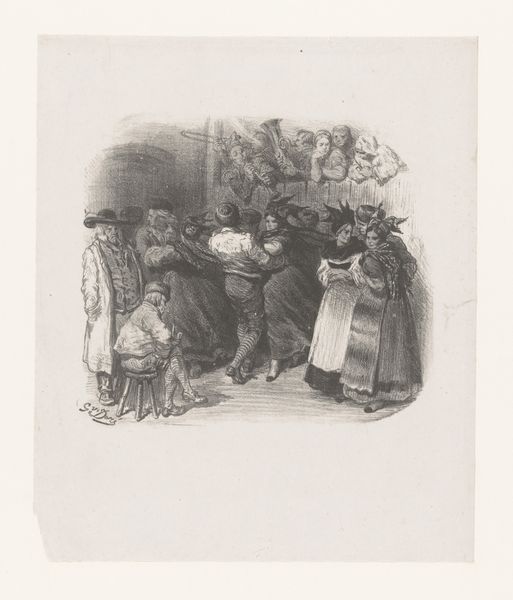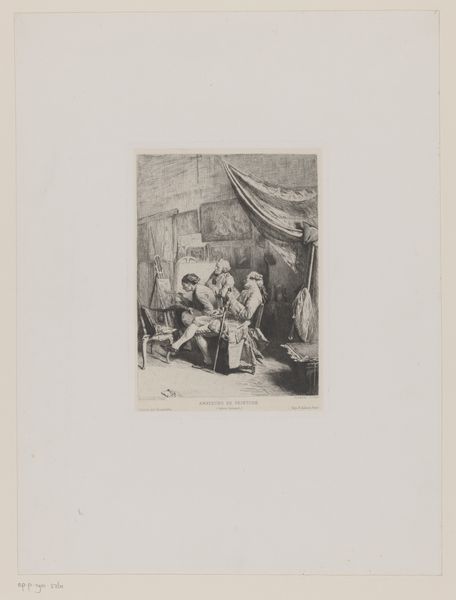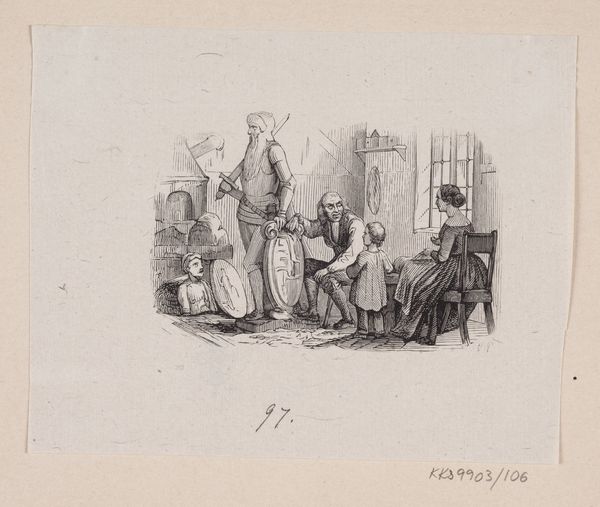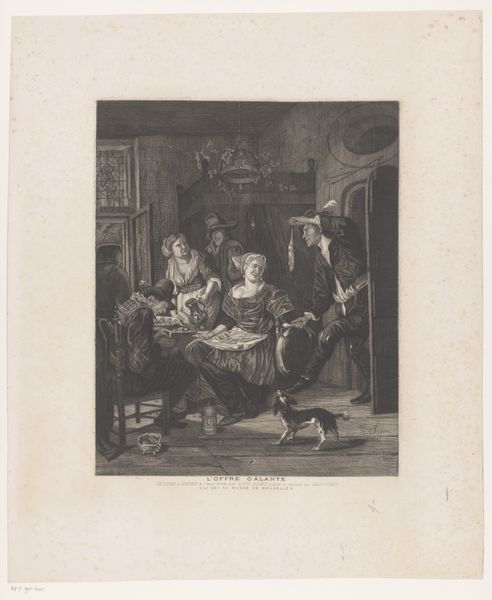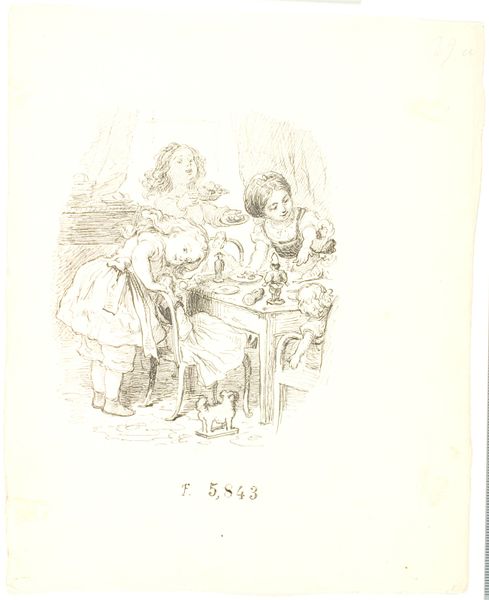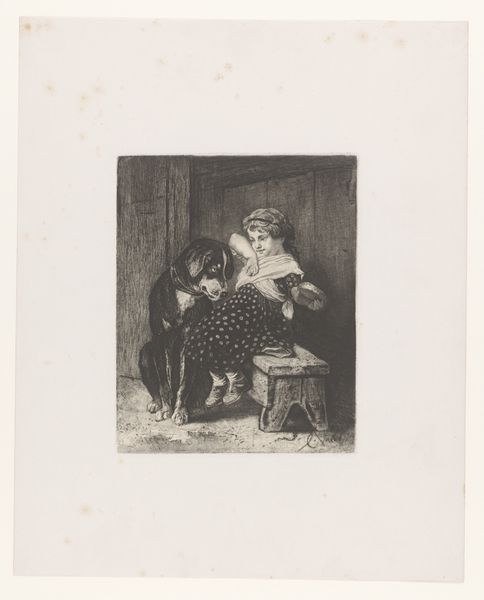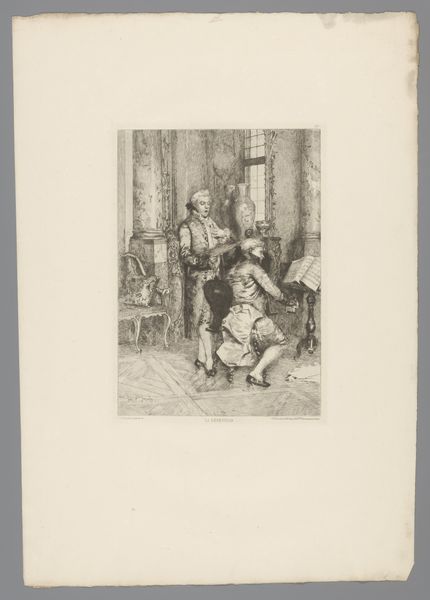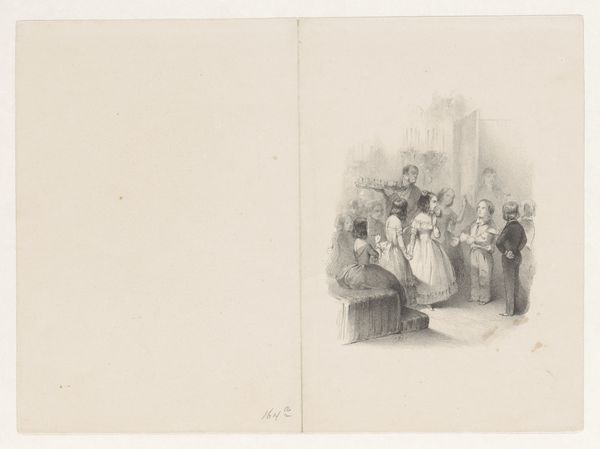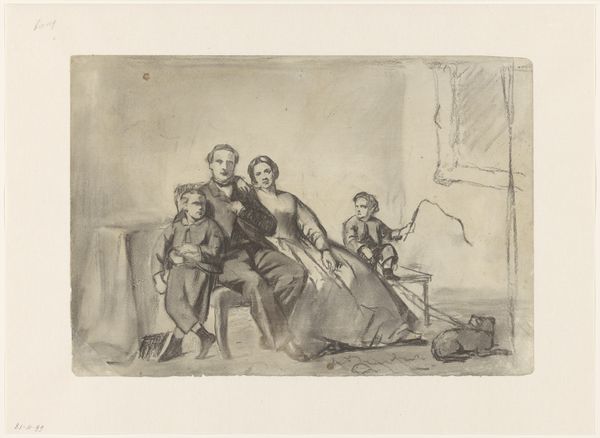
drawing, pencil, charcoal
#
pencil drawn
#
drawing
#
pencil sketch
#
charcoal drawing
#
figuration
#
pencil drawing
#
pencil
#
pencil work
#
genre-painting
#
charcoal
#
realism
Dimensions: height 240 mm, width 180 mm
Copyright: Rijks Museum: Open Domain
Editor: This is "Drinkend Gezelschap," or "Drinking Companions," by Ary Johannes Lamme, sometime between 1822 and 1900. It’s a drawing, mostly in pencil, depicting what seems to be a casual tavern scene. There’s a soft quality to the light and figures…almost dreamlike. What captures your attention in this piece? Curator: Well, firstly, there's that fantastic sense of immediacy, isn’t there? Like we've stumbled upon a moment frozen in time, capturing the conviviality with charcoal and pencil – it's a very potent combination! Genre scenes like this often serve as windows into the social fabric of the era. Notice the clothing, the interactions… They’re giving us clues to what life was like for everyday people, wouldn’t you say? Editor: Definitely. It's interesting to see the depiction of leisure. But does the seemingly unfinished style take away from the message? Curator: Unfinished? Oh, I see it differently! To me, the sketchy nature *adds* to the authenticity. It's like a memory, half-remembered, all the more precious because of its fragility. Lamme captures a fleeting moment. What does that incomplete feeling evoke for you? Editor: Hmm, I see your point. The "incomplete" feel almost makes the scene more relatable. It doesn't feel staged or idealized. Curator: Exactly! It feels more authentic than polished perfection. Art isn't always about rendering every detail; sometimes, it's about capturing a mood, an atmosphere. Think of it like poetry—a whisper can sometimes be more powerful than a shout! Now, after looking and thinking deeply about this scene of companionship, would you say your impression of the piece has shifted from that initial feeling of it being “dreamlike?" Editor: For sure! Now I notice how skillfully Lamme used line work to focus on community and momentary joy in 19th-century society. Thanks so much!
Comments
No comments
Be the first to comment and join the conversation on the ultimate creative platform.
